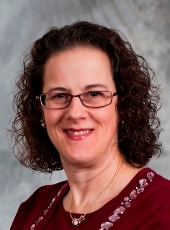You are here
Overview of Clinical Trials Treating Cerebral Palsy with Cord Blood

The vast majority of the media stories about cord blood therapy for cerebral palsy (CP) have been anecdotal reports of children who were treated by the group of Joanne Kurtzberg, MD, at Duke Medical Center. However, there are now multiple trials running around the world and more planned, so it is helpful to compare and contrast some of the trials. This overview is simply meant to be informative, not a comprehensive list or a rating of trials.
This type of therapy started because Dr. Kurtzberg noticed that children who were receiving cord blood transplants for hematologic disorders were displaying remarkable improvements in neurologic skills. In 2004 her group began giving autologous (their own) cord blood stem cells to young children who were diagnosed with various "acquired neurological disorders", a label that includes CP as well as other diagnoses such as anoxic brain injury, hypoxic brain injury, periventricular leukomalacia, encephalopathy, hydrocephalus, and in-utero stroke.
By the end of 2009, 184 children had been treated at Duke and were reported in a publication. Those cases showed that the procedure is safe, but there was no control group against which the efficacy of the treatment could be measured. The following clinical trials divide the patients into "arms", and each arm of the study receives a different treatment, enabling the effect of the treatments to be measured against each other.
In Korea, Minyoung Kim, MD PhD, is the lead investigator of a trial (NCT01193660) that has used allogeneic (donated) cord blood to treat 105 children with CP. The study ran from May 2010 to April 2011 and the results have been submitted for publication. The study had 3 arms: rehabilitation only, rehabilitation plus erythropoietin (a hormone that stimulates bone marrow to produce stem cells), and rehabilitation plus erythropoietin plus a matched cord blood donation. Since the effects of cord blood stem cells and erythropoietin are expected to be similar, that study is not likely to yield conclusive results about the efficacy of the cord blood infusion.
The table below compares another 4 trials that treat CP with cord blood. In all of these trials, the patients are divided into 2 arms. In those trials which enroll children who have stored their own autologous cord blood, both groups of children receive stem cells, but the difference between the two arms is whether the children receive their cells right away, or after a time delay. Basically the 2 arms test stem cells now versus later, and the length of the time delay varies between the trials. The study in which children receive donated allogeneic cord blood tests stem cells against a control without stem cells. To keep the patients blind as to who received stem cells, most trials give a "sham" infusion to the control group. In Australia, the ethics review board does not approve of subjecting children to sham infusions, so instead that study will emphasize double blind neurological assessments.
Hopefully, by 2013 or 2014 we will see the first publications from controlled trials that can measure the efficacy of cord blood for the treatment of cerebral palsy in young children.
| Eligible Diagnosis | Cerebral Palsy | Spastic Cerebral Palsy | Cerebral Palsy | Cerebral Palsy |
| Cord Blood Stem Cells | Autologous | Autologous | Autologous | Allogeneic |
| Institution | Georgia Health Sciences University, USA | Duke University, USA | Monash University, Australia | Sung Kwang Medical Foundation, Korea |
| Investigators | James E Carroll Roger A Vega Elizabeth Sekul Lloyd O Cook Roni Bollag Suzanne Strickland Afshin Ameri | Joanne Kurtzberg Jessica Sun | Suzie Miller Michael Fahey Euan Wallace | Minyoung Kim Kyunghoon Min Su Jin Jang Jason Shim Junyoung Song Myung Seo Kang Sang Heum Kim |
| ClinicalTrial.gov # | NCT01072370 | NCT01147653 | Pending | NCT01528436 |
| Start Date | January 2010 | June 2010 | Pending | February 2012 |
| Goal Enrollment | 40 | 120 | 20 | 40 |
| Both arms get stem cells? | Yes | Yes | Yes | No |
| Delay between infusions | 3 months | 12 months | 6 months | None |
| Sham infusion? | Yes | Yes | No | Yes |
| Brain imaging? | No | MRI | No | PET |


